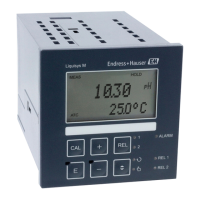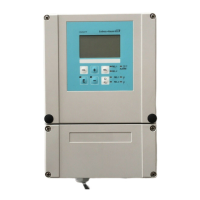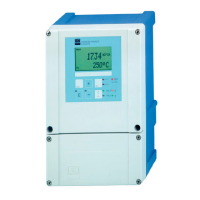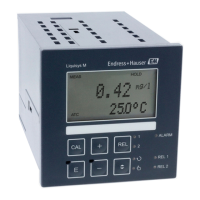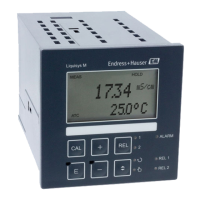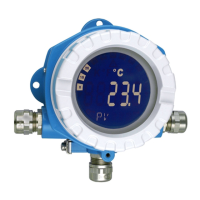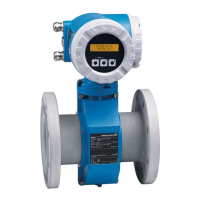Commissioning Liquisys M CPM223/253
36 Endress+Hauser
6 Commissioning
6.1 Things to note when commissioning digital sensors
pH sensors with Memosens functionality save the calibration data. For this reason,
commissioning these sensors is different to commissioning standard electrodes.
Proceed as follows:
1. Install the transmitter and the assembly.
2. Connect the transmitter and the sensor cable.
3. Configure the transmitter for your specific requirements (see "System configuration"
section).
4. Connect the sensor with the Memosens functionality, which was precalibrated at the
factory, and immerse it into the medium or the buffer.
5. The saved sensor-specific calibration data are automatically transmitted to the
transmitter.
6. The measured value is displayed.
Normally, you can accept this value without calibrating the sensor. A calibration is only
necessary in the following instances:
– Where there are strict requirements in terms of accuracy
– When the sensor has been in storage for more than 3 months
7. Check the measured value transfer to the process control system or the signal
processing unit.
6.2 Things to note when commissioning ISFET sensors
Switch-on behaviour
A control circuit is created when the measuring system is switched on. During this time
(approx. 5 to 8 minutes), the measured value adjusts to the real value. This settling
behaviour occurs every time the liquid film between the pH-sensitive semi-conductor and
the reference lead is interrupted (e.g. caused by dry storage or intensive cleaning with
compressed air). The settling time depends on the length of the interruption.
Sensitivity to light
Like all semi-conductor elements, the ISFET chip is sensitive to light (measured value
fluctuations). However, this only affects the measured value if the sensor is directly exposed
to sunlight. For this reason, avoid direct sunlight when calibrating. Normal ambient light
does not have any effect on the measurement.
6.3 Function check
Incorrect connection, incorrect supply voltage
Safety risks for staff and incorrect operation of the device
‣ Check that all connections have been established correctly in accordance with the wiring
diagram.
‣ Make sure that the supply voltage matches the voltage indicated on the nameplate.
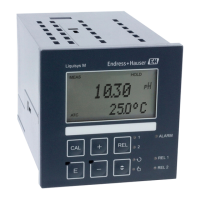
